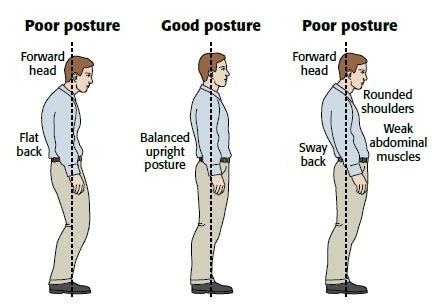One of the Keys: Posture
One of the key aspects of the Motion portion of the Empire Longevity 'Pyramid of Health' is - posture, along with cardio, power, flexibility and balance. Posture is one of the simplest ways to start engaging your clients in their longevity.
I have been evaluating and then correcting posture of patients for all of my Chiropractic career, and have had a case study, maybe two, that were published.
We all, even non practitioners, evaluate another persons posture, sometimes not intentionally. We see people walking around at the mall, or in line at the movies and remark to ourselves "wow, that person must be hurting'.
Do you evaluate posture? I use an app called 'posture screen' (found here: https://www.postureanalysis.com/posturescreen-posture-movement-body-composition-analysis-assessment/). I highly recommend it. It not only can take the picture of a person, but it can digitally mark their posture and then show you what their head approximately weighs, and what the forward head posture weight is. It is a great tool to have and gives your client a new window into their own posture and health. The communication of what the evaluation says and means is absolutely critical, and we will have specific videos on just how to do this.
One of the books that I think is great is "The Downside of Upright Posture", in which the author Michael Flanagan, DC discusses the 'Anatomical Causes of Alzheimer s, Parkinson s and Multiple Sclerosis', as the title tells. It is out of print now, and very expensive to purchase. In the book Flanagan shows how our posture can affect the nervous system and stress the neural communication that is an integral part of us. Take a good 30 minutes on the web and look for articles on the importance of good posture and see how many articles you can find. I often copy or at least save those articles to have as a reference library for myself, my clients, and patients.
When I first started practicing in I had one woman in my practice who had forward head posture. Mrs. Johannson was from Norway. One person. Now? The vast majority of the college age kids and younger display postures where their head is at least 2x what it should be. I have seen many patients who have 3x and 4x times head weight. "Do you think this is why I have (fill in the blank # of symptoms)"? A very simple, and direct "Yes".
I evaluate posture on the very first day with a patient, show them the results, and then proceed with my neurological testing, which includes vestibular testing, surface emg, thermography, and heart rate variability, among other evaluations. I do this to get a much deeper assessment of our patients status. The vast majority of them have never had the opportunity to look into themselves like this. One of the keys for you the practitioner is how you communicate these findings as again, these clients have probably never had anyone discuss with them what the findings say and mean for them.
Your first homework in this area is to read a few articles on posture. Here are some I recommend:
* Detection of cognitive decline by spinal posture assessment in health exams of the general older population: https://www.nature.com/articles/s41598-022-12605-7
* Hyperkyphotic posture and poor physical functional ability in older community-dwelling men and women: the Rancho Bernardo study: https://pubmed.ncbi.nlm.nih.gov/15972617/
* Hyperkyphotic Posture Predicts Mortality in Older Community-Dwelling Men and Women: A Prospective Study: https://agsjournals.onlinelibrary.wiley.com/doi/abs/10.1111/j.1532-5415.2004.52458.x
* Hyperkyphotic posture and risk of injurious falls in older persons: the Rancho Bernardo Study: https://pubmed.ncbi.nlm.nih.gov/17595423/
* Association of kyphotic posture with loss of independence and mortality in a community-based prospective cohort study: the Locomotive Syndrome and Health Outcomes in Aizu Cohort Study (LOHAS): https://bmjopen.bmj.com/content/12/3/e052421
As a practitioner one of the absolute KEYS you must understand is that posture typically does not start in the 50s, 60s, or 70s of our clients, it may show the signs and symptoms of having been there to the body, but I do not see it starting then. I typically see it start decades previously, in the teens and twenties. More and more kids are coming in with neck and back pain that is related to the abnormal posture. And please do not believe that the child will 'grow out of it'. My 30+ years in practice shows that the kids will 'grow INTO it', meaning they will adapt to the abnormal posture and make compensations for it. Yet another example that longevity planning starts much earlier than our health care societies have communicated to us.
When you subscribe to the blog, we will send you an e-mail when there are new updates on the site so you wouldn't miss them.
Want more Info? Contact Empire Longevity:
Be a subscriber to "Vitality" ~the Empire Longevity Newsletter
Find the Empire Longevity Insiders on Facebook.
This is a closed group but always open to new people
looking to be with their fellow LONGEVITY seekers.



Comments